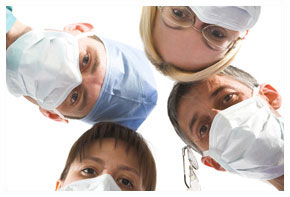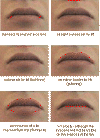Lip Augmentation: Surgery Day is Finally Here! At last – the day for your lip enhancement surgery is here! You're feeling a lot of emotions – excited, perhaps a little worried about what lies ahead and, hopefully, finished with your surgery preparation and looking forward to recovery. We have some final tips and recommendations for you, which are listed below (with a printer-friendly version just a click away). This list offers suggestions from women who've been through lip enhancement surgery and are offered to help you on your journey. But, as always, you should follow any and all instructions you've received from your surgeon. If you didn't get a list, ask for one. Many of these tips are very important, while others will simply make the ride home more comfortable. Of course, your own outcome depends on how long your lip surgery was, when the anesthetic wears off, if you had any additional procedures, your pain threshold and whether or not you were given pain medication for the ride home. Printer Friendly Version RECOMMENDED!
Lip Augmentation surgeryIt usually takes about 30 minutes to an hour and 15 minutes, depending upon the technique and the skill of the surgeon. Your surgery may take longer if other procedures are being performed in conjunction with your lip augmentation, such as a lip lift or non-lip procedures. If you are being put under anesthesia, you may be hooked up to a saline IV drip before going into the operating room. Once you're there, the staff will hook you up to a heart monitor and your vital signs will be checked before going any further. You will possibly be marked up with a permanent surgical marker and scrubbed with Betadine to sterilize your incision area and the surrounding facial area. The surgeon begins by making the incisions, which will be dictated by the procedure you are having. You should go over the intended technique with him or her prior to surgery so there are no surprises. Some possibilities are:  The actual lip lift and mucosal turn-out incisions will be larger than the above diagrams depict. A sliver of skin is removed for lip lifts and mucosal turnouts and the resulting incision is thin because the tissue is pulled together and sutured. Scar tissue can take up to a year to mature, although the lip area is very vascular and heals rather quickly. Unfortunately, the mouth is also teeming with bacteria, making this area very susceptible to bacterial infections. In the case of a lip implant, a tunnel is created to accommodate the implant. A proper tunnel is the difference between a poorly-placed and uneven graft and a symmetrical, natural-looking result. The implant is then clamped with an insertion device that usually comes with it, your lip is skewered and the implant is pulled through the lip. The implant(s) are trimmed to size and the incisions stitched closed. Coming Out of Anesthesia
Recovery RoomYou will be taken to the recovery room and placed in a recliner, hospital bed or gurney in a somewhat upright position to help with swelling and comfort (if your lips are below your heart they will throb a lot more). Your saline drip (if you had one) will most likely still be in and you will be hooked up to the monitors so that your vitals can be properly tracked. You will probably feel a throbbing or numbing pain from your lips -- be careful you don't bite them! If you feel sick or are in pain, alert the recovery nurse. He or she will give you a pain reliever and possibly some anti-nausea medication or a few sips of cool water to ease your stomach. This will ensure a more comfortable ride home. You should wait for your local anesthesia to wear off before eating, although sipping liquids (cool to warm, not hot) is acceptable. If you must have solids to help settle your stomach, go easy. Saltines are one option. If you chose local anesthesia only, you won't need to stay in the recovery room for very long since you were not actually sedated. If you chose light sleep sedation or a local with IV, you should be allowed to go home within 2 to 3 hours. If you chose general anesthesia, they will want to keep you around for a bit longer. You may need to urinate directly after surgery due to the amount of saline in your system; in fact, your surgeon may insist that you do so before releasing you. You must have someone drive you home and care for you for the first 48 hours if you were sedated. Sedation really affects your motor skills, memory and balance, so this person will need to help you to the bathroom, dressing, eating, etc. Many times after being sedated you sleep on and off for a few days and time seems to be of no consequence, so you need to have someone there to keep you on track and to make sure you take any medications that have been prescribed. |

